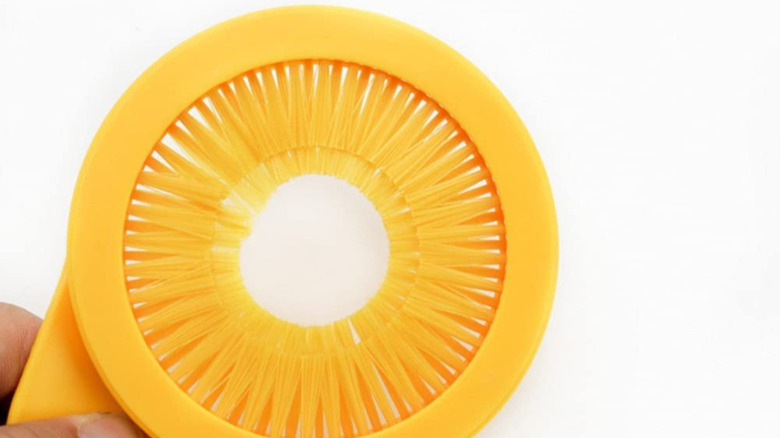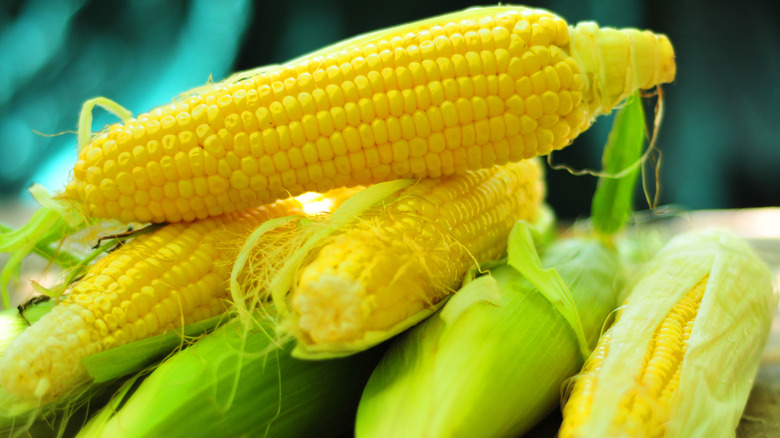Why Corn Silk Gadgets Are A Waste Of Money
If your kitchen includes a junk drawer or cabinet that has been converted into a gadget graveyard, you're probably not alone. Statista reports an estimated 17.6 billion dollars was projected the amount spent on kitchen fluff in the United States alone last year, which probably includes garlic presses, avocado slicers, and the like. Also among those is a corn silk remover, a device that claims to strip the silks of your corn without harming the kernels.
The cost of such a gadget won't break the bank considering the retail price lists under $10; however, a corn silk remover may not be necessary, considering there are much simpler ways to get the job done. Not only will sticking with traditional methods to remove corn silks save you money, but the tried and true ways will also save storage space in your kitchen. For example, you can use a brush tool that you already have or, even better, your own stove or microwave.
Alternatives to removing corn silks
The silks are considered the female part of the corn, which absorbs the pollen that the tassel (the male part) sends down for kernel growth. The silks are sticky and can get messy, especially if you're desilking a whole bushel of corn. So, it's likely you're performing this task outside with a dish towel or vegetable brush. When using a towel, most of the silks will rub off with a quick turn of the cob, and the same idea can be applied with a brush. In both instances, a toothbrush is recommended to remove those pesky little stragglers.
Still, there are a couple of hacks that don't involve a brush at all — one technique requires a gas stove. After you've shucked the corn, you can pass the ears one at a time briefly over your stove's gas flame, which will burn the silks off without cooking the kernels. You can also microwave one to four ears of corn on high for two to six minutes. Once heated, allow them to cool, and then cut the silkless ends off. Finally, pull the husks back slightly on the other end to grab the cob while pulling it from its husks, and the silks should slide right off. This method allows the corn to cook in its own juices resulting in tender, flavorful corn on the cob.

